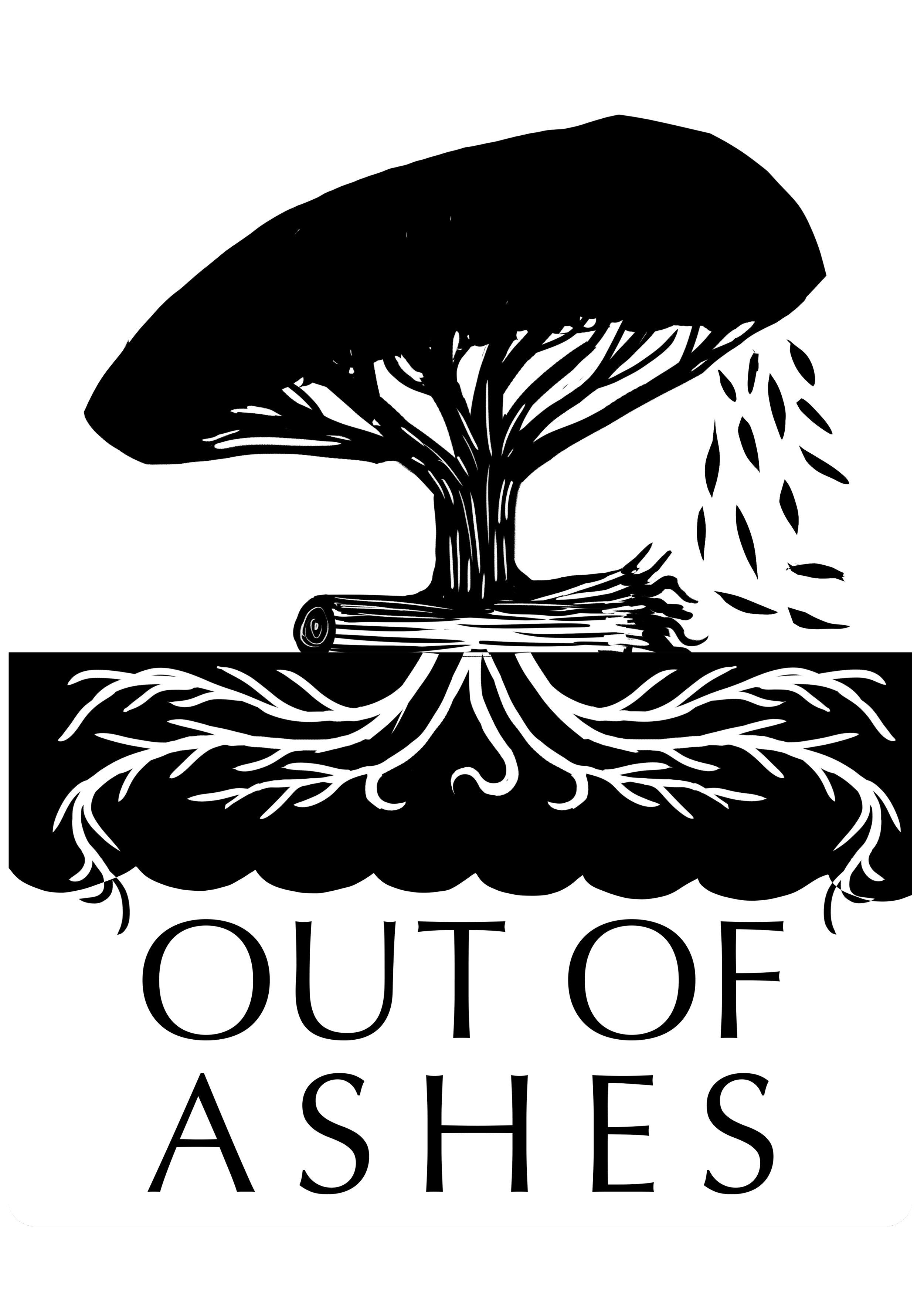Forest Edge Vineyard - 30 Years In.
We were at our local farmers market a few months ago and Allison noticed a new winery. She saw their name, "Forest Edge Vineyard," walked up to them and asked if they were permaculture people, since, who else talks about Forest Edges? Turns out that this couple has been practicing Permaculture since before it was cool.
Ron, who owns the vineyard with his wife Jan, was part of the first Permaculture Design Course ever done in the US, back in 1982, taught by Andrew Jeeves and partly by Bill Mollison. It's humbling to meet people that have been at it longer than you've been alive. Not only that, but these two live 15 minutes from our farm!
We scheduled a farm visit and had the pleasure of spending a few hours at their incredible 45 acre farm, 30 of which is in sustainably managed forest. They've now been on their property for over 30 years, making this one of the few examples of a property under long-term permaculture management.
We took a LOT away from our time with these two, and want to pass on some of the tidbits we observed and those they generously shared.
Life on the Edge
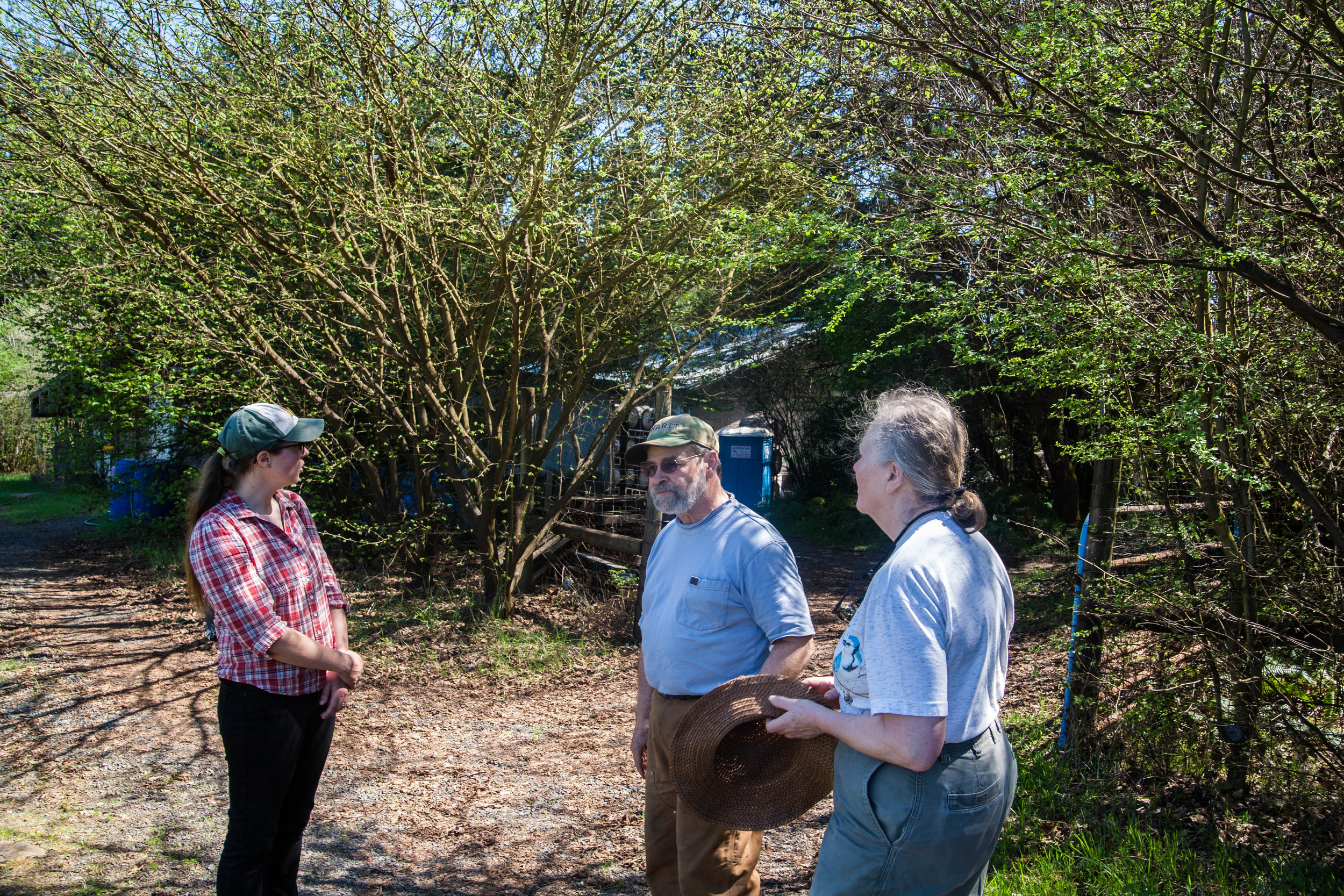
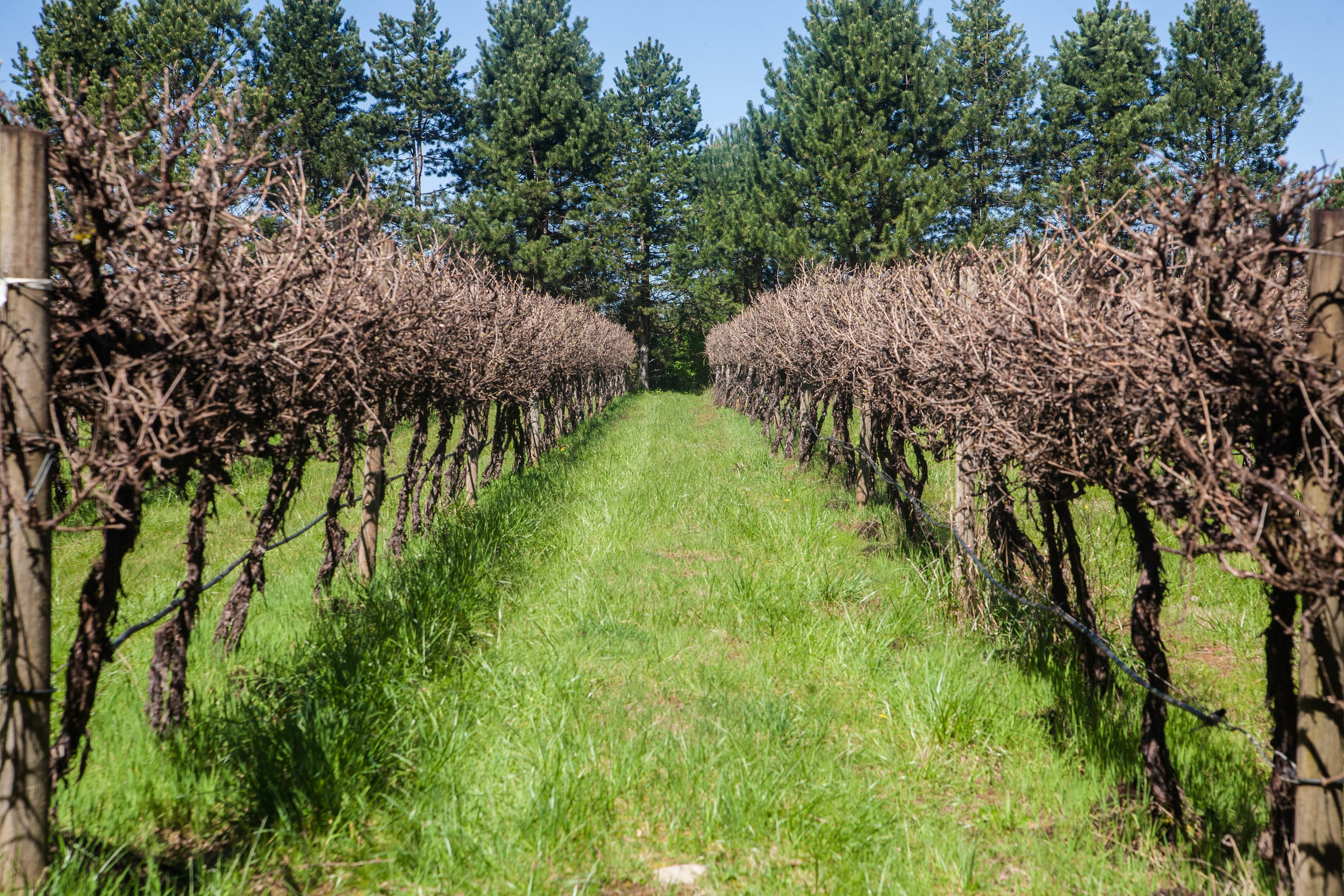

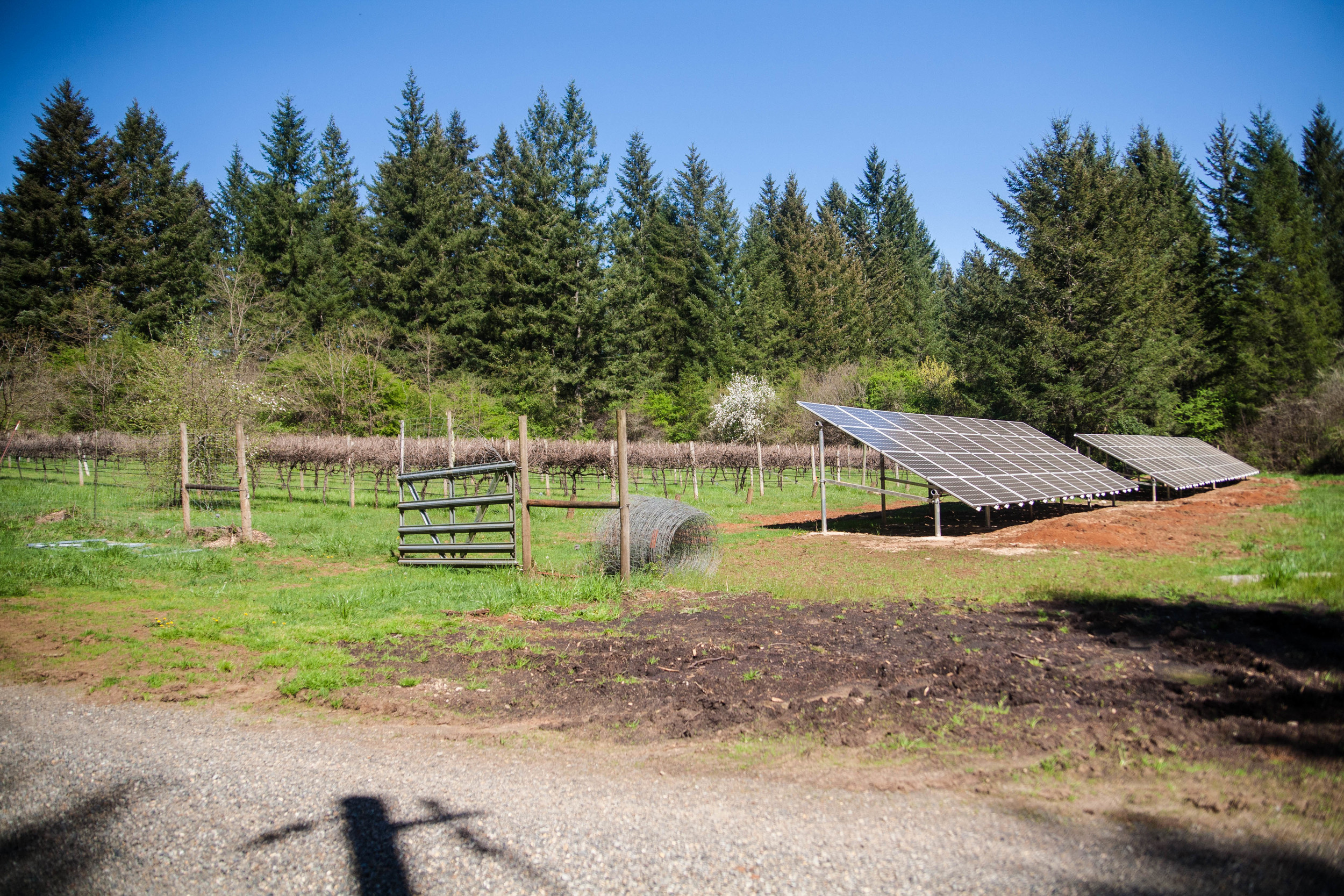
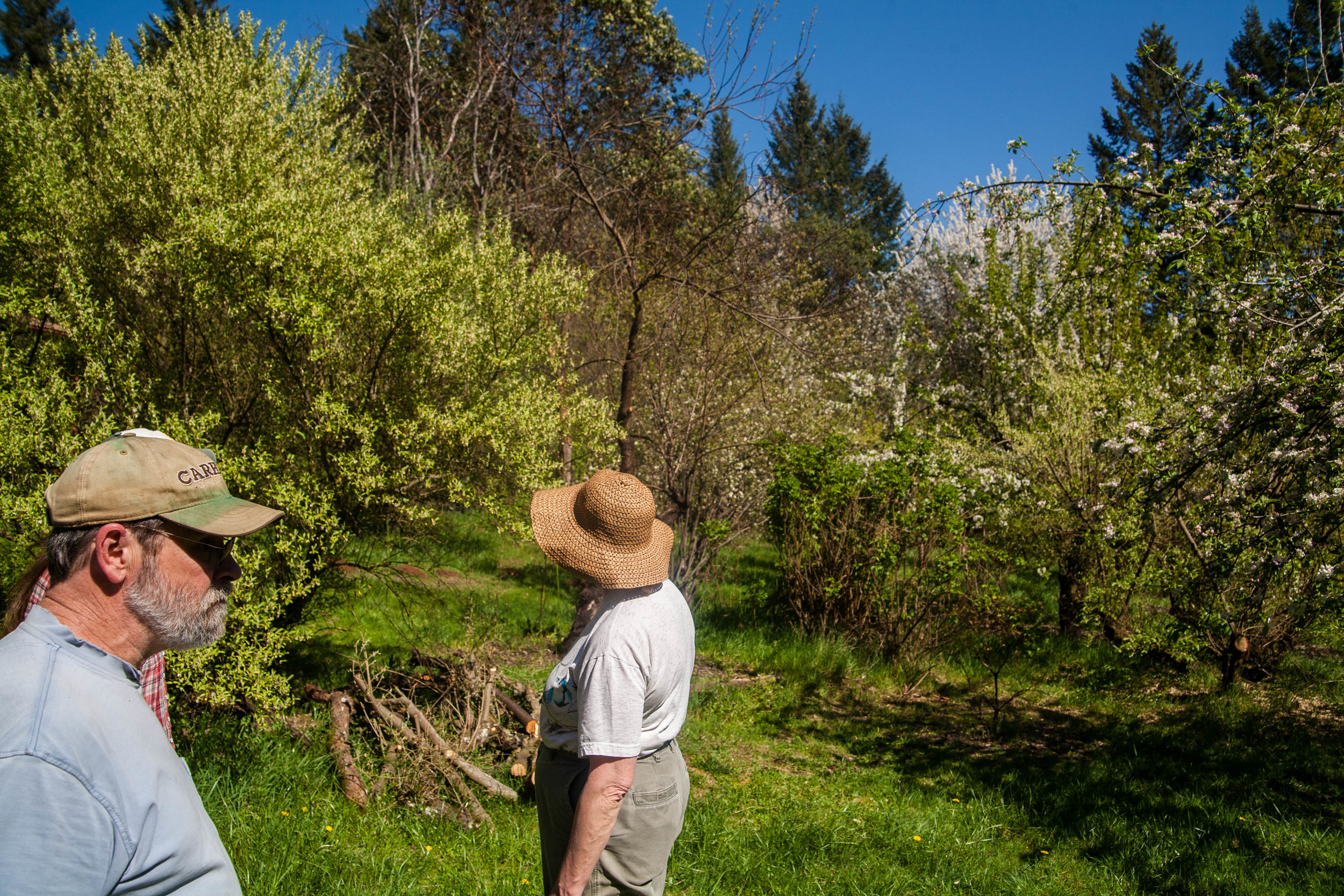
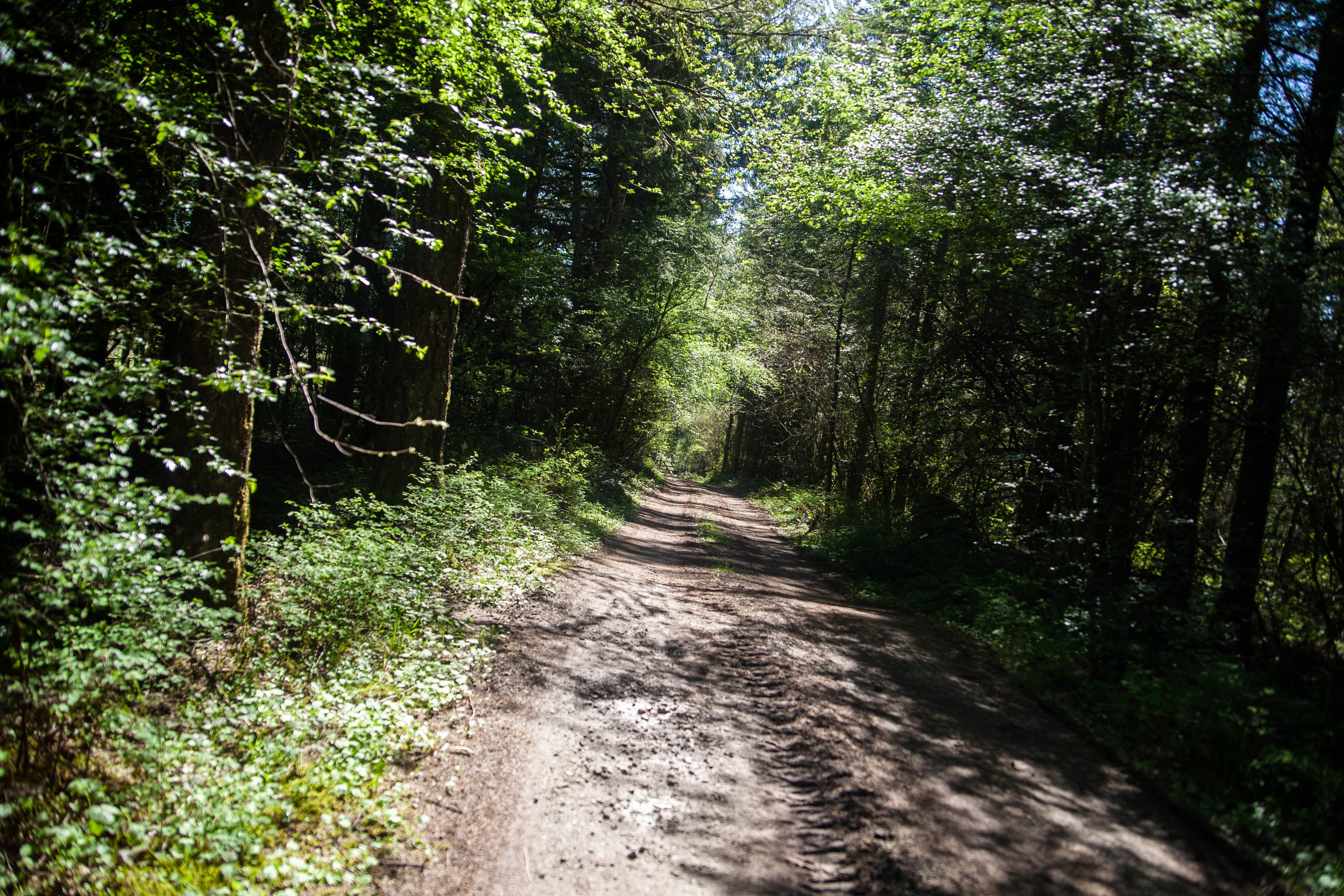
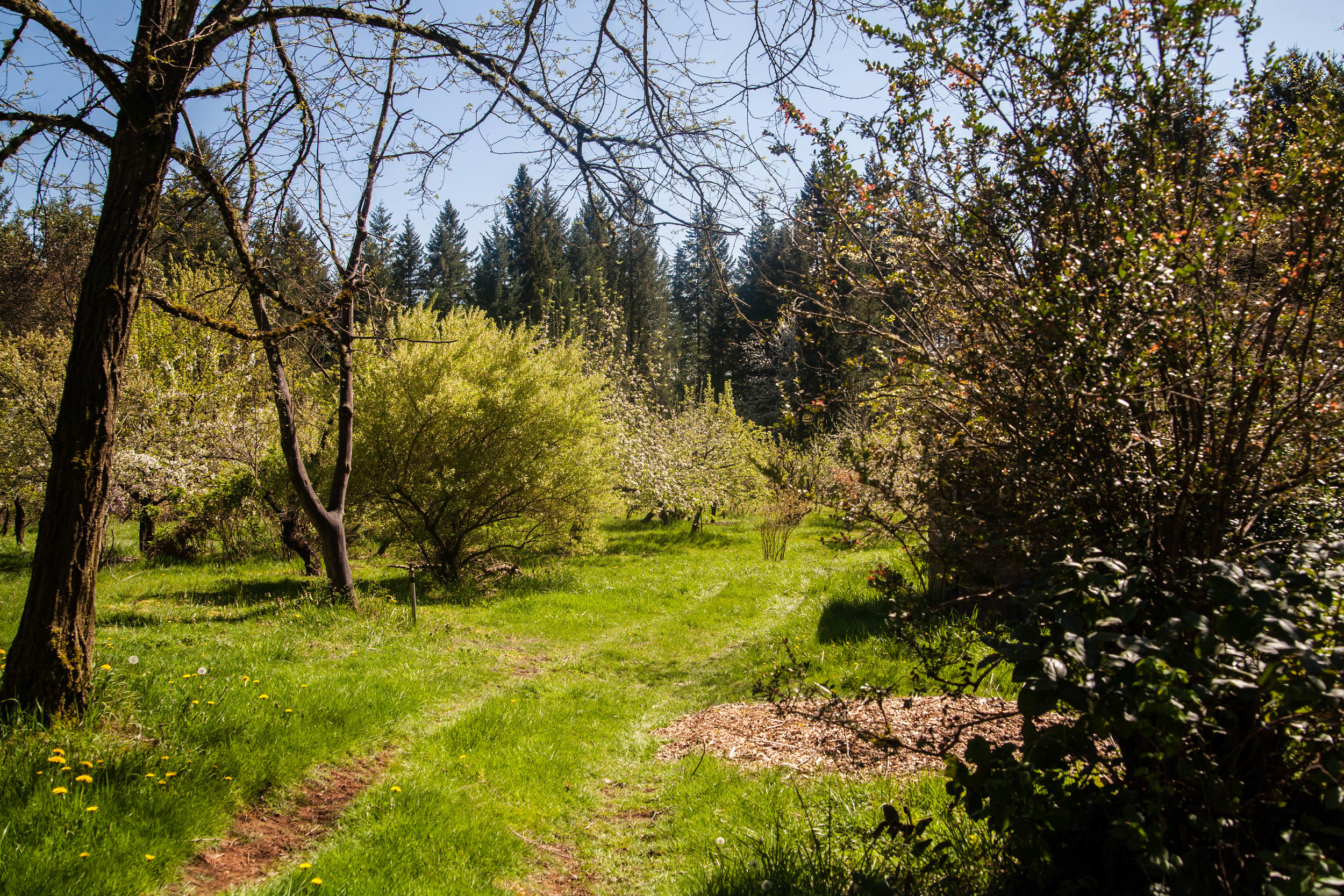
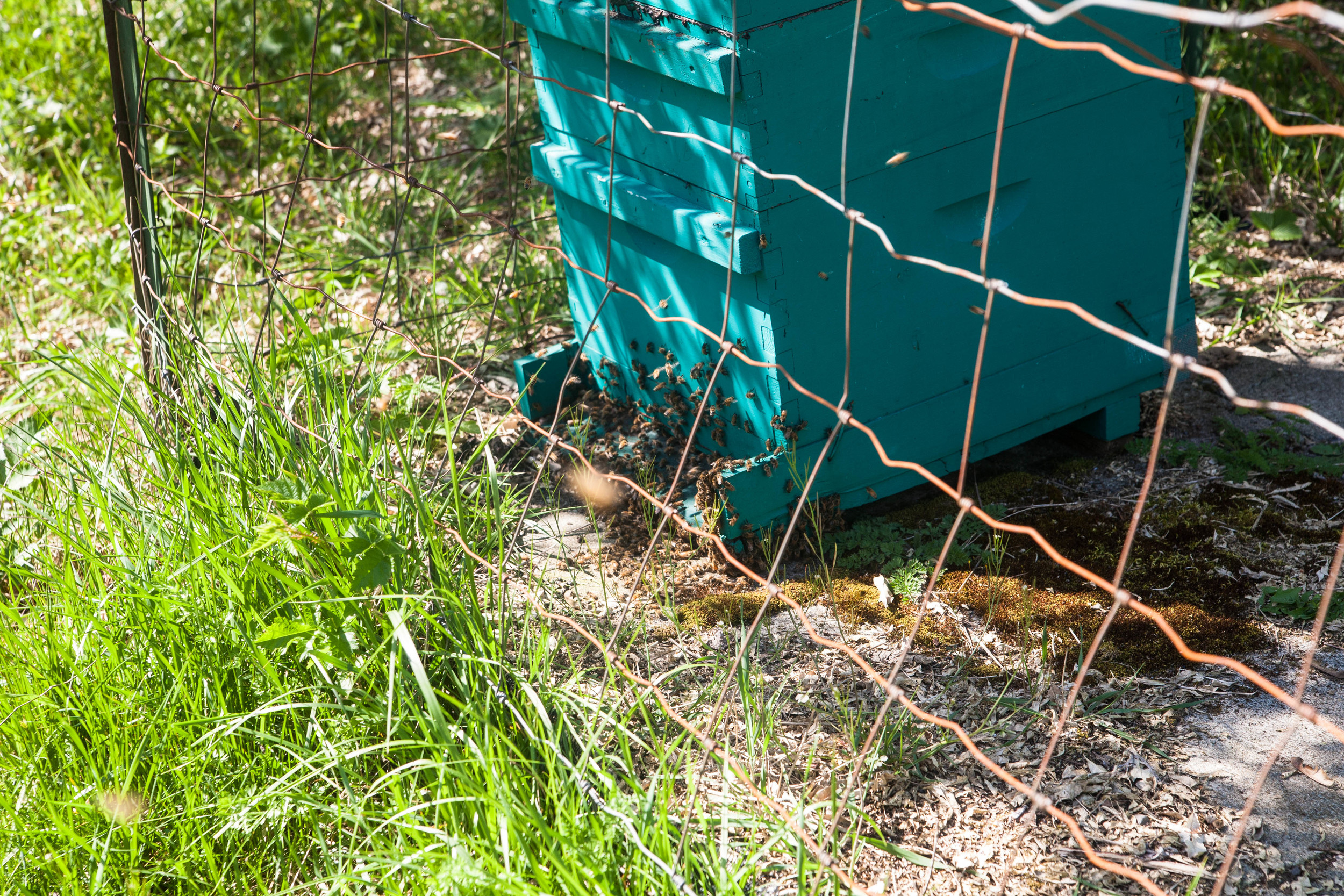
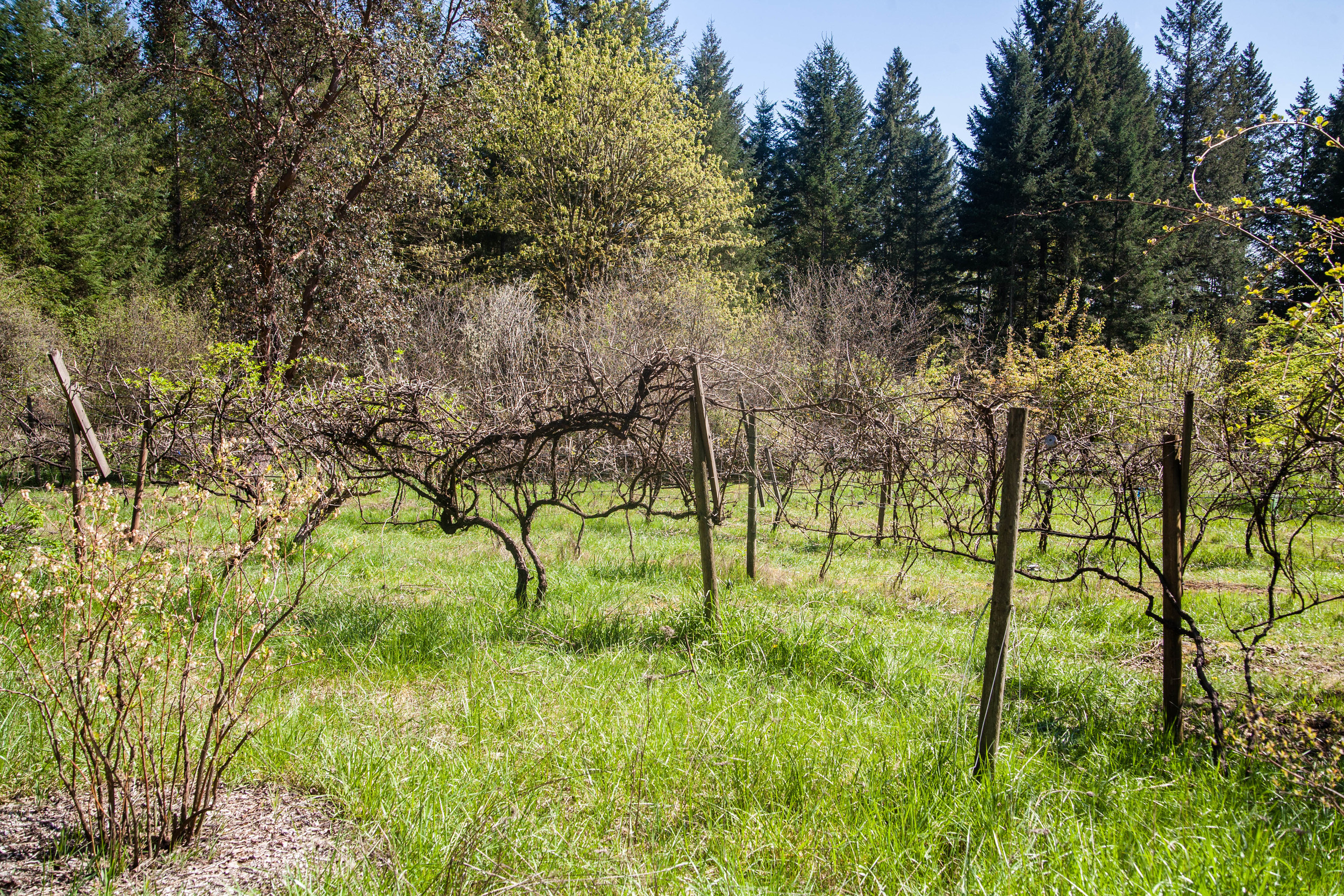
One of the most striking things about Forest Edge Vineyard is the fact that it is, truly, forest edge farming. The vast majority of the property is forest, and the parts that are vineyard are nestled in the arms of NW native habitat. Their vineyard is placed on gently sloping south facing ground, and feels like an addition to the landscape intended to benefit from the native plants and natural micro-climates rather than supplant them.
In the management of their vineyard they use organic practices and a minimal prune approach. They've tried a more traditional intensive pruning regimen, but have found no benefit in yield or quality over just trimming the plants with a hedge trimmer and letting them grow as they will.
The vines are irrigated with water that comes from a pond fed by our prolific NW rainfall, including the runoff from the winery they've built on site (more on that later).
Their homestead site, which is about 4 or 5 acres, likewise sits completely surrounded by forest. It opens up into a perennial food forest, another smaller planting of grape vines, beehives and their home.
As we walked around the home site, they pointed to things that have worked - like planting fruit trees in-between the pipes in their drain-field; things that they would do differently - like planting more goumi berries instead of autumn olive; and things that didn't work - like trying to set up the grape vine trellis at a 60 degree solar angle (it put too much pressure on the trellis when the vines were full of grapes).
Housing
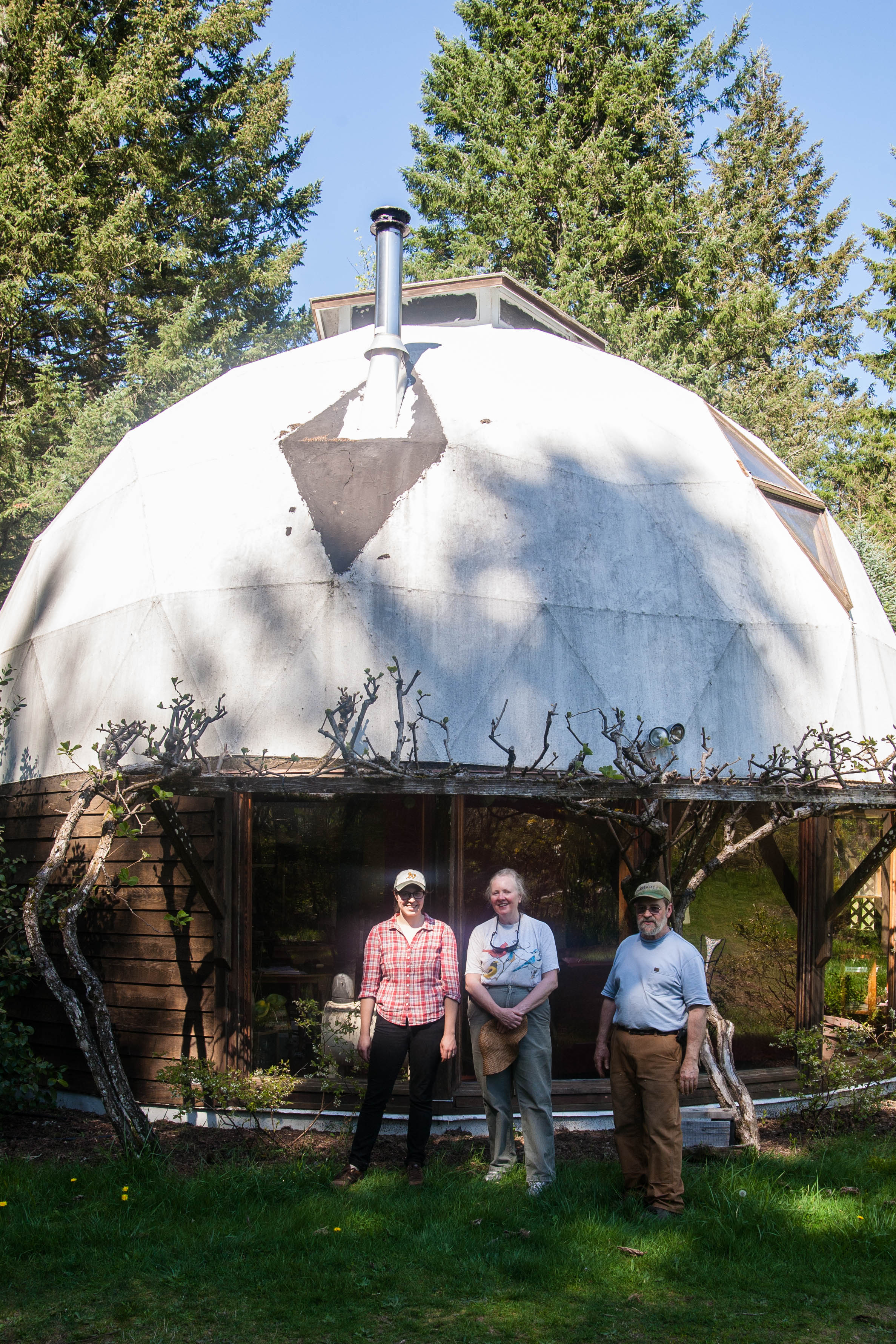
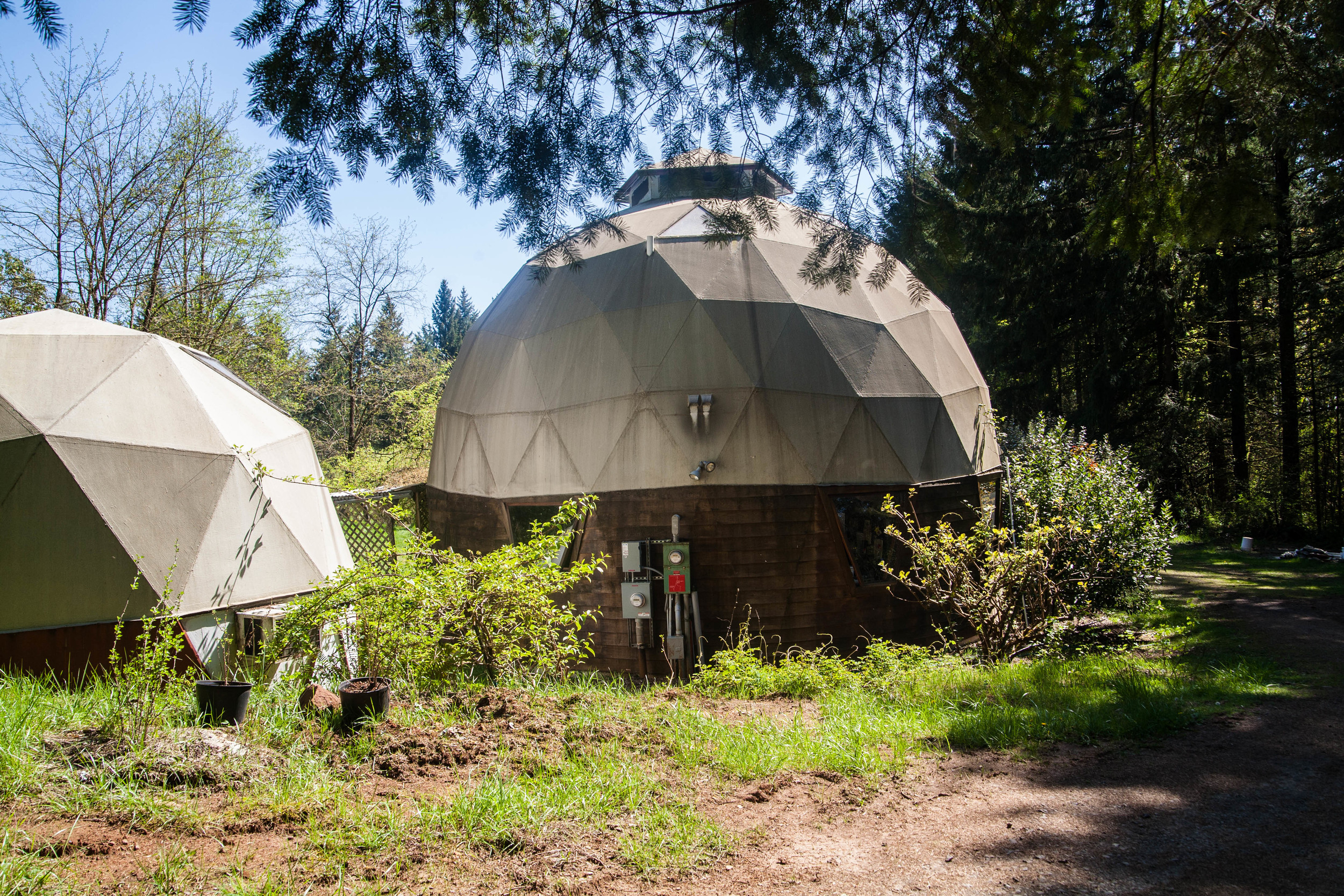
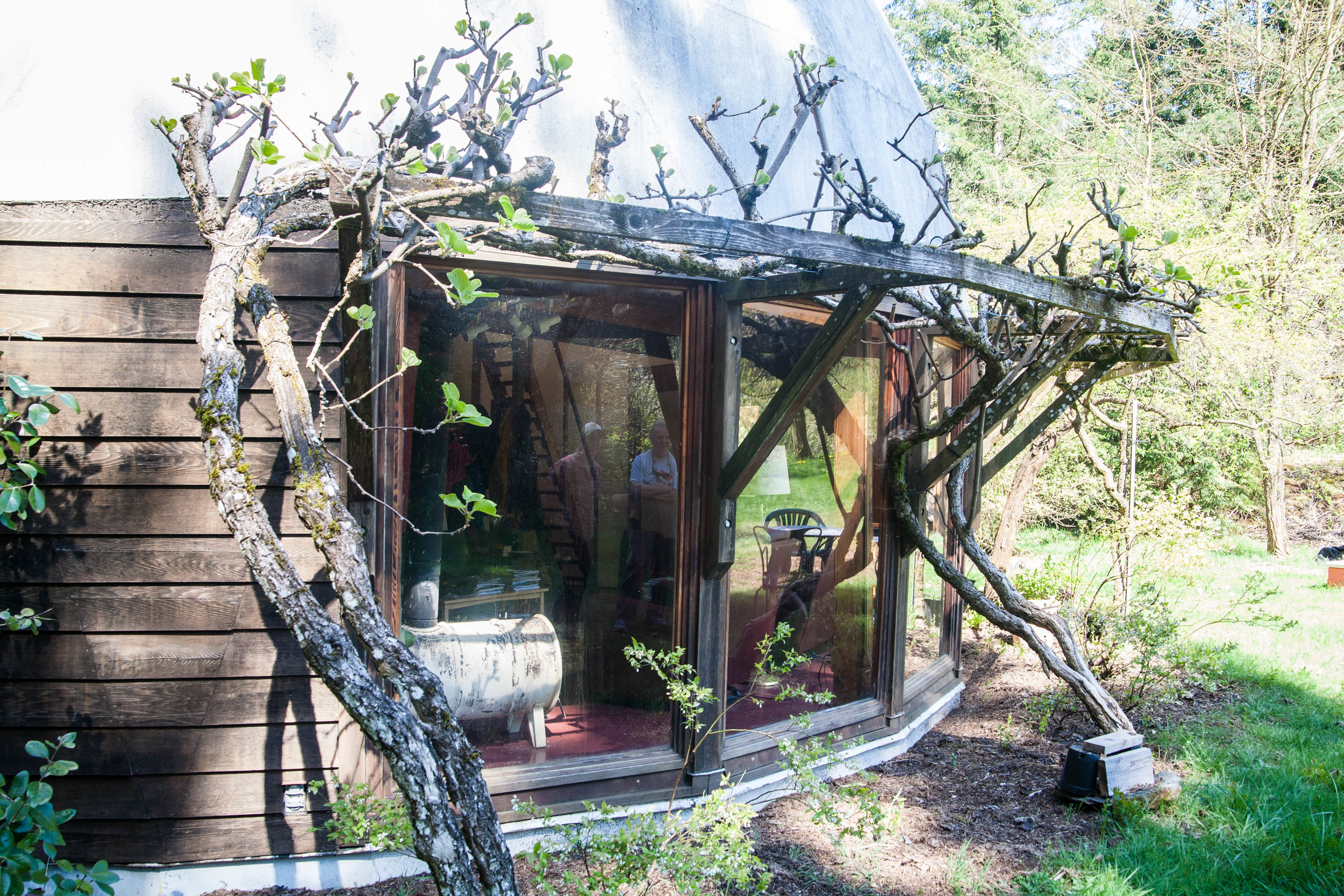

30 years ago Ron and Jan built a geodesic dome, using very well thought out passive solar design including a fully insulated foundation, south facing windows that are covered by hardy kiwi in summer and the efficiency benefits of the dome.
Throughout our tour they were always quick to point out the things that have been practically challenging. Turns out it's hard to find furniture for a dome.
They always intended to build a larger, semi-attached home next to the current dome, but have directed energies toward some other ambitious projects.
The Winery
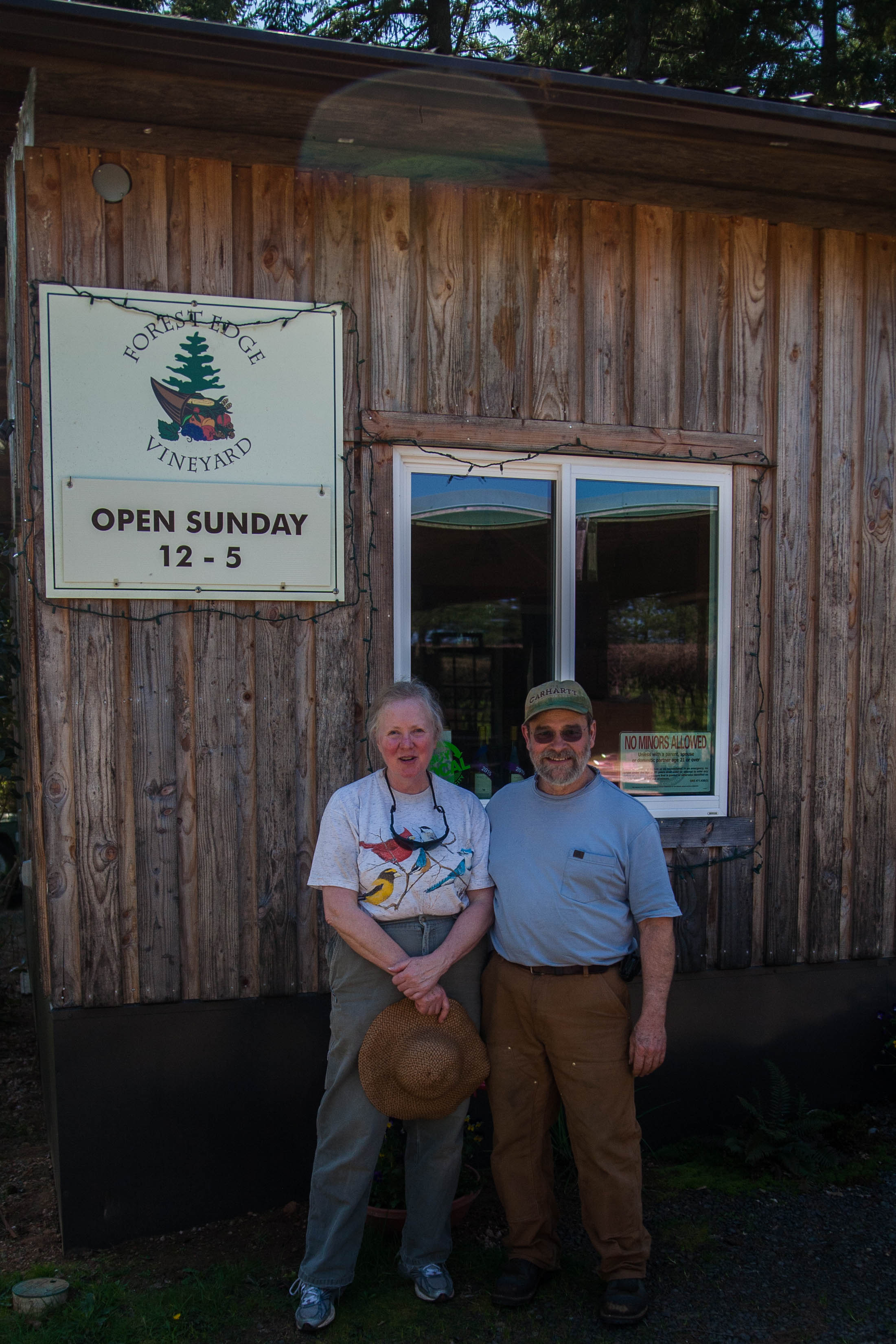
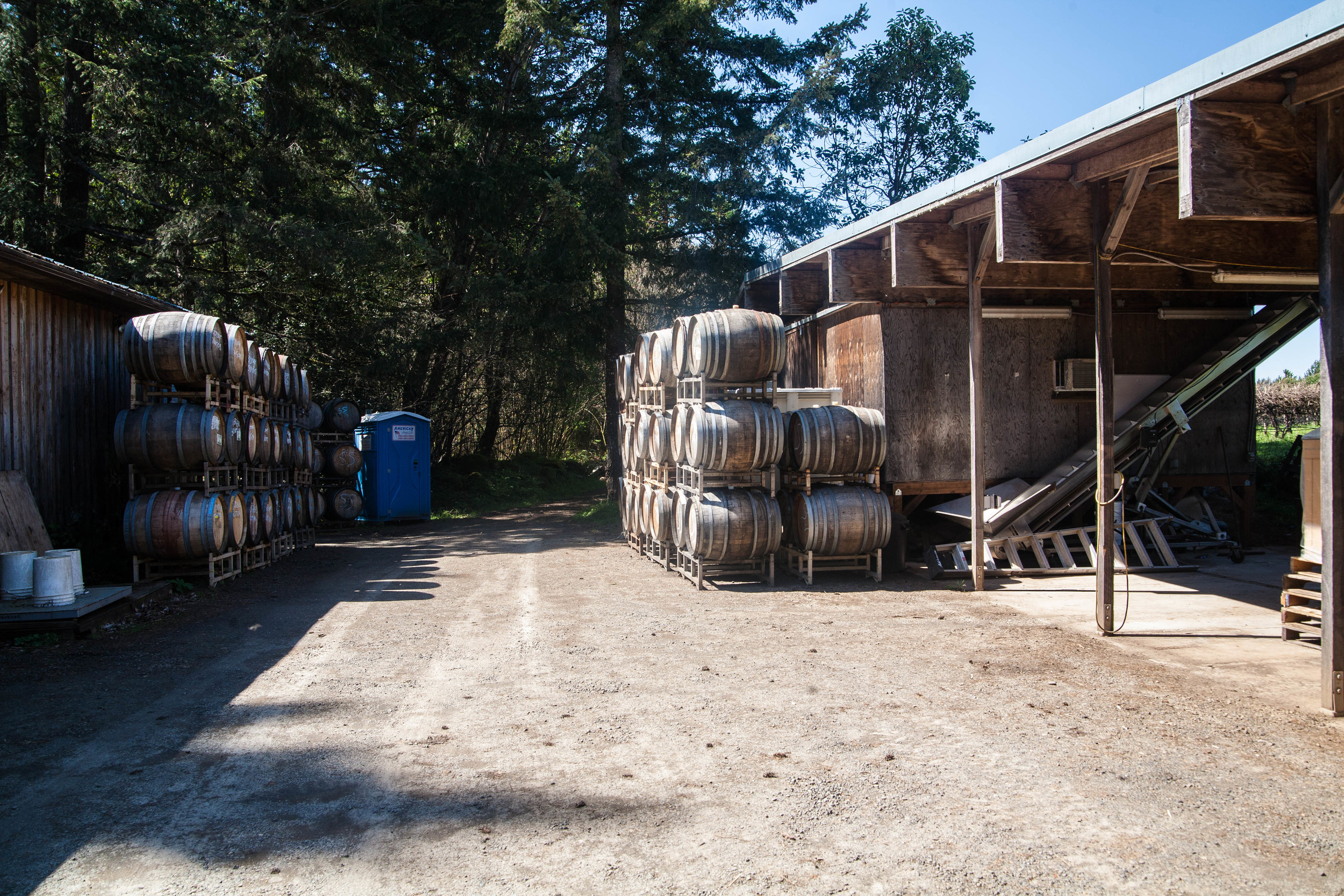
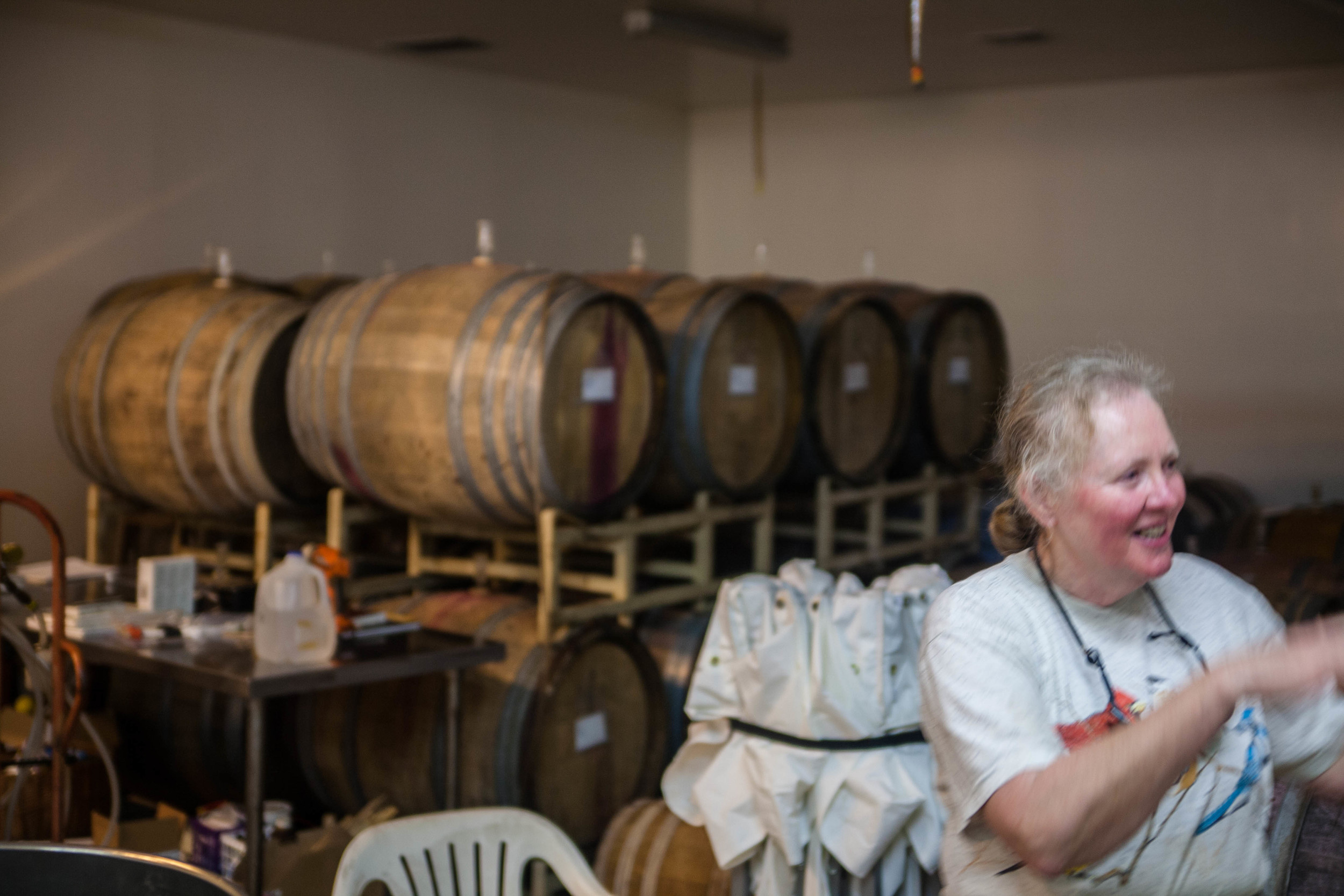
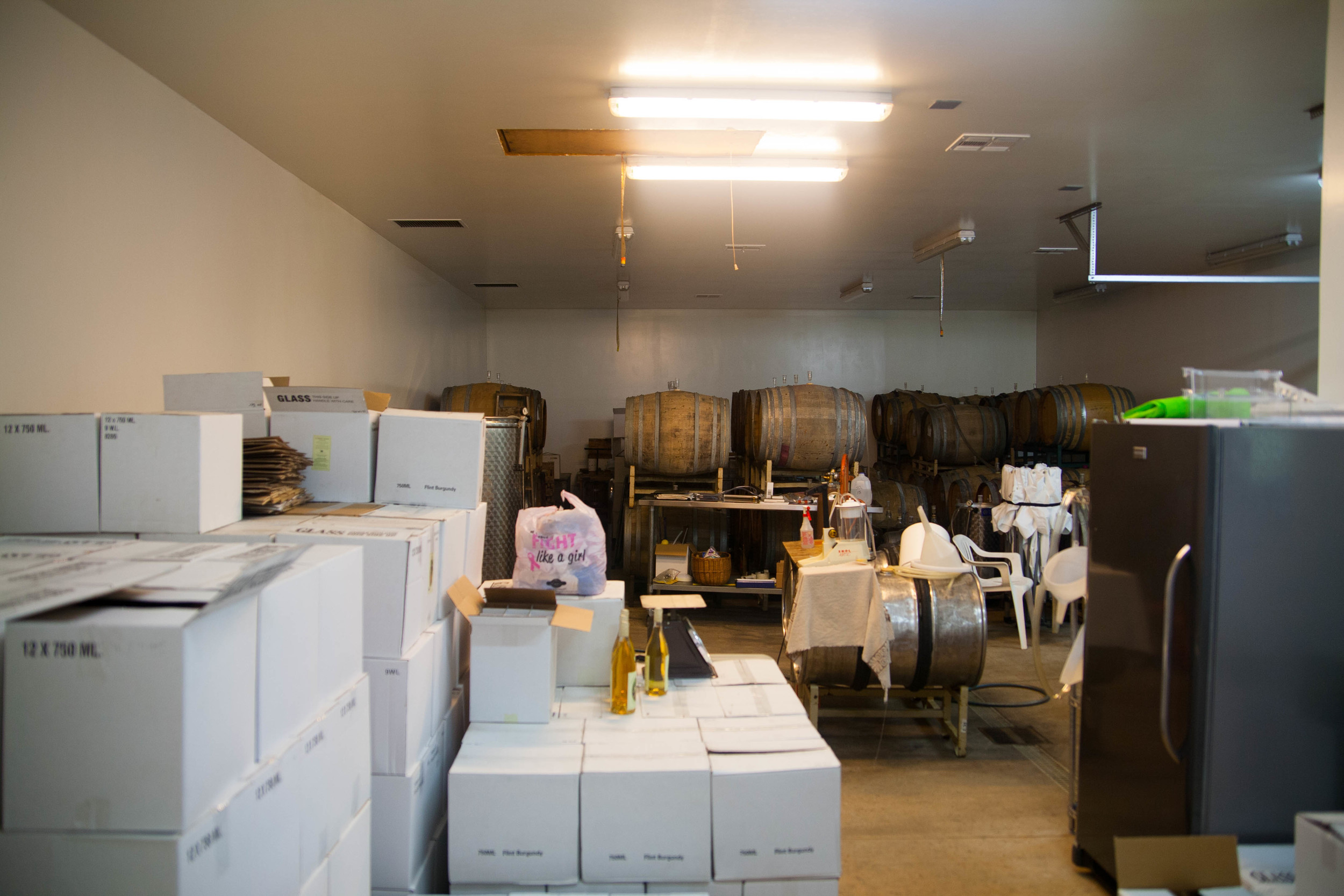
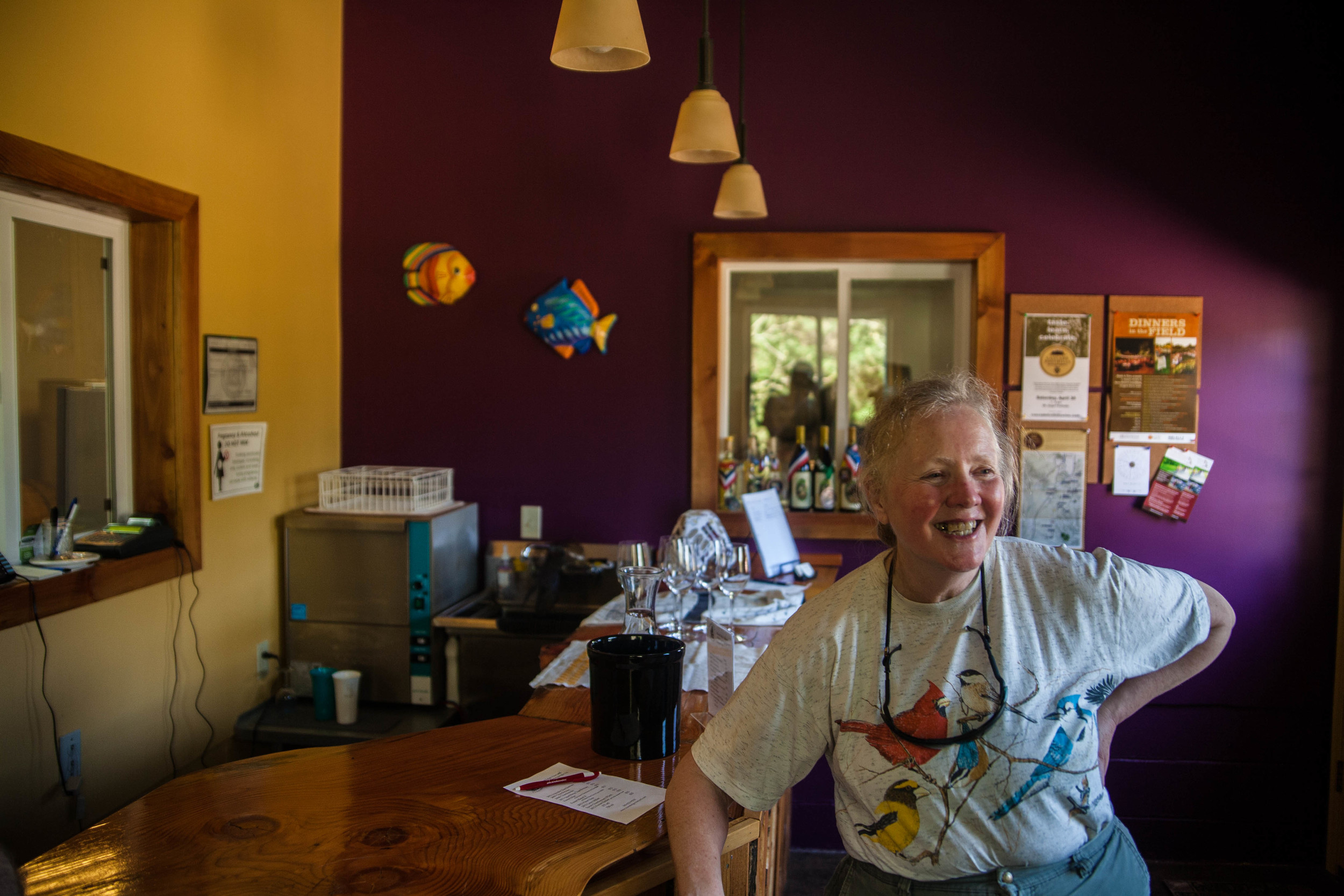
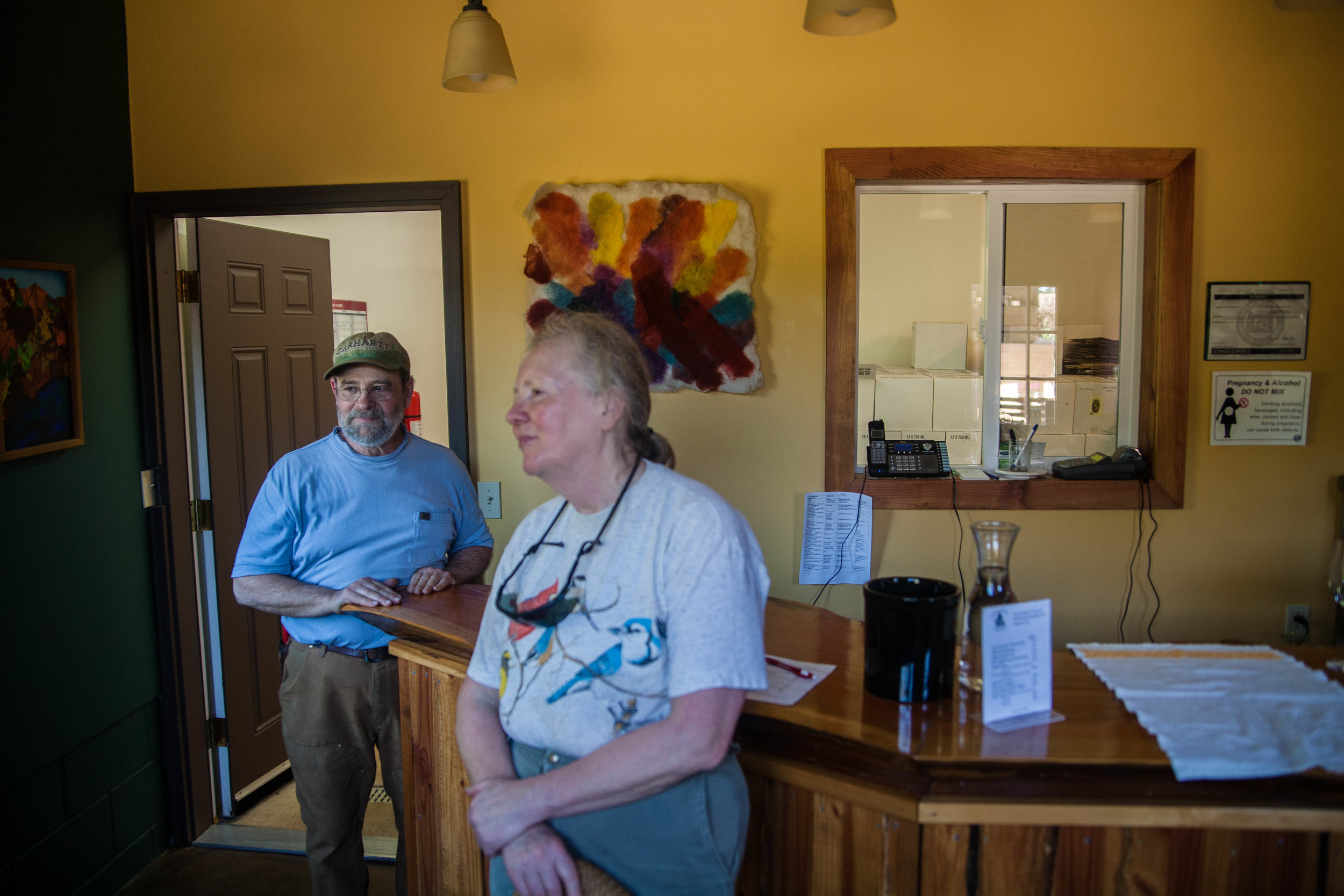
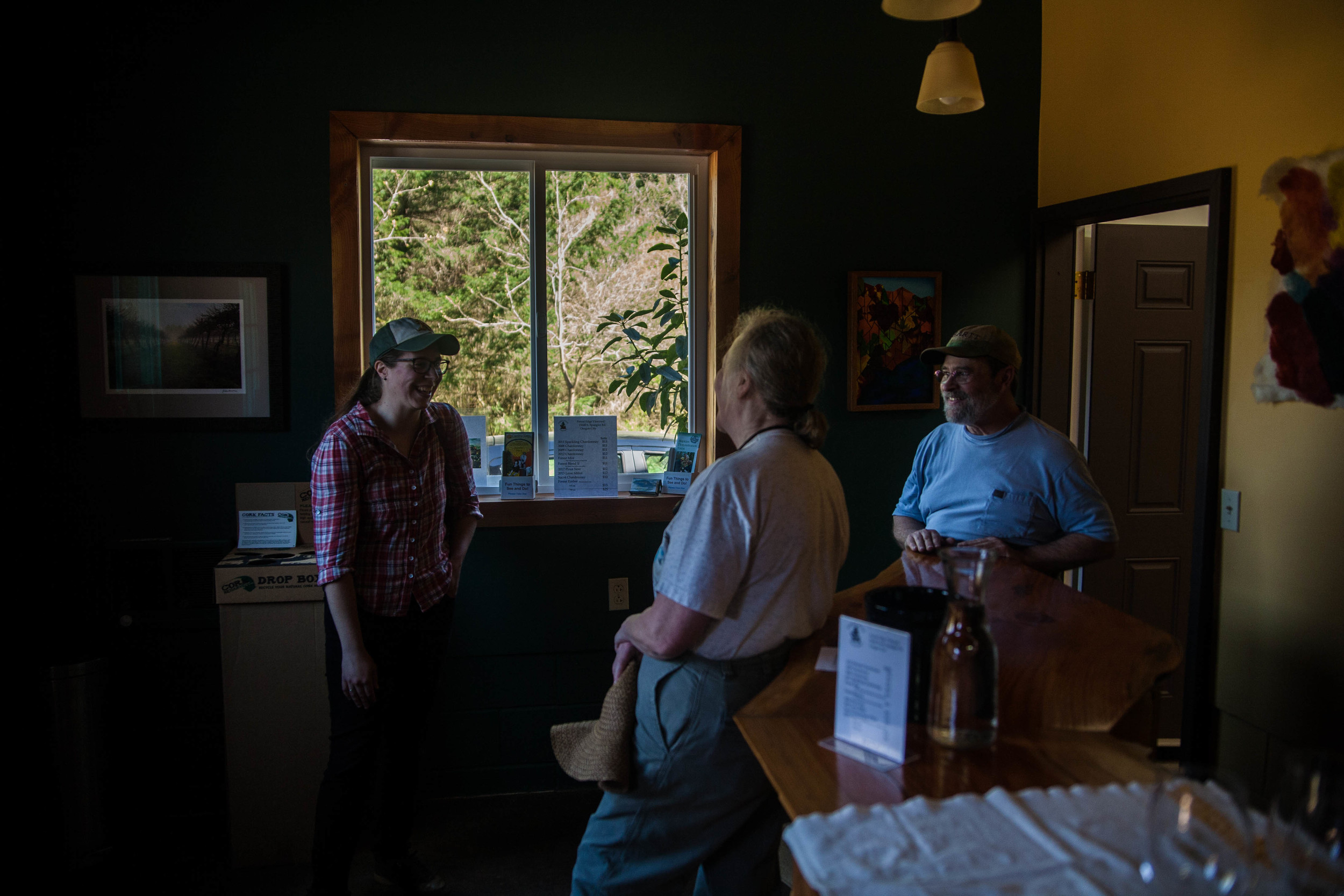
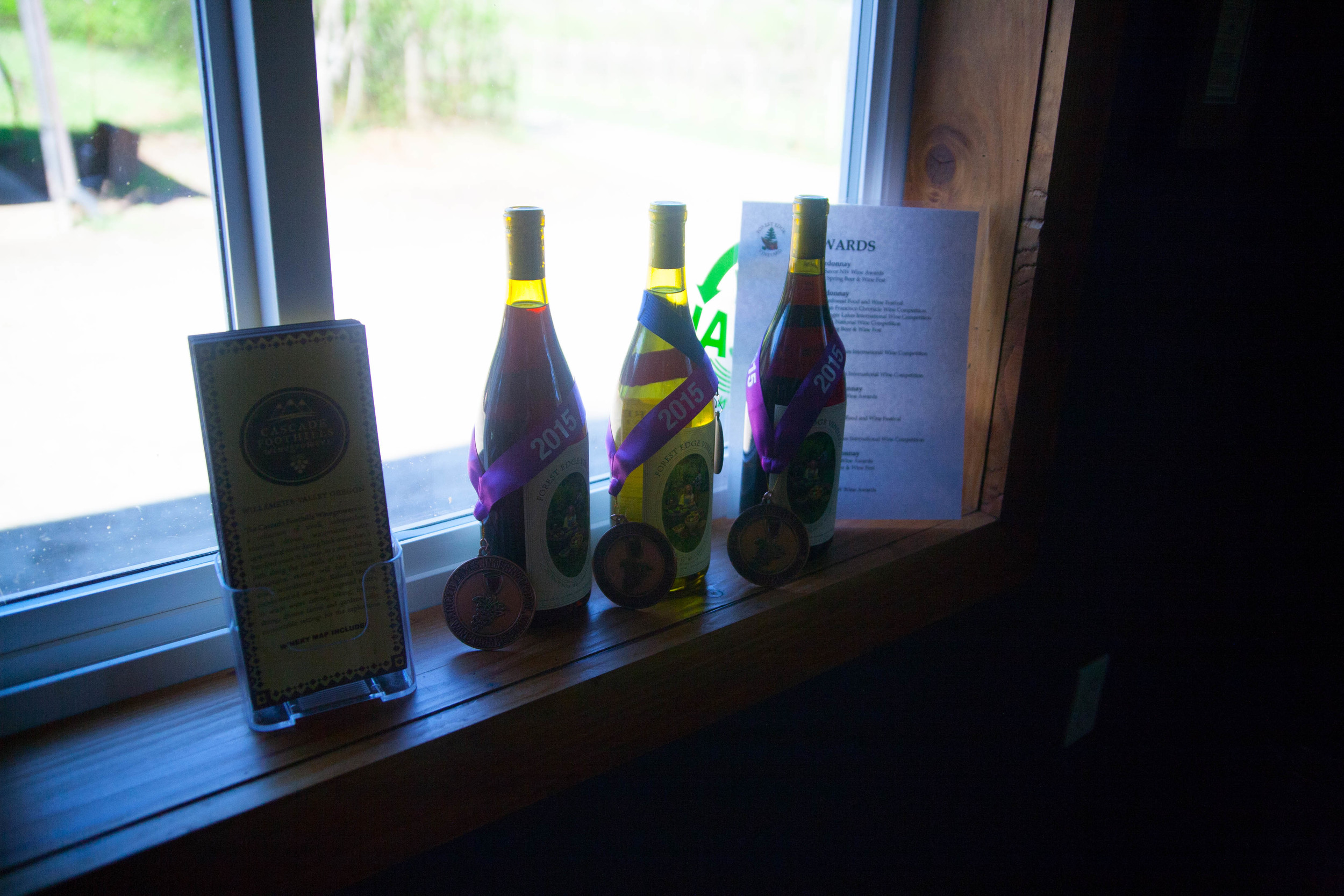
Did I mention that just about everything they have built onsite has been sourced from the property? In the early days, Ron wanted a saw mill. Jan told him he could buy one, but if he did he wasn't allowed to ever buy a piece of lumber from the lumber yard. He hasn't. This is especially impressive when you see their winery, which they built themselves, entirely from lumber they milled on site.
I can attest to the quality of the wines they are producing. I've tried a number of them, and they have a clean quality taste that leaves you feeling good after a glass. They have worked hard to make wines that are priced like a table wine, but which certainly exceed the typical quality of the daily vino. A number of their wines have received awards, for good reason.
Ecological and Economic Sustainability
For an enterprise to be sustainable it can't just be good for the earth, it also has to be economically viable. Ron and Jan knew this from the outset. It was surprising for us to learn that they didn't intend to start a winery from day one.
When they bought the property it was zoned in such a way that in order to live on-site, they had to demonstrate a farming business plan that required them to. They weren't originally set on starting a vineyard but Ron got hold of a brochure that laid out, in decent detail, the costs and steps required to start a vineyard, so he basically copied that and submitted it to the county as their farm business plan. It worked out, and they were given the go ahead to move on-site!
Ron and Jan have worked very hard to build a viable business. In Jan's career (she's recently retired) she was a public health nurse for the county and that helped subsidize the vineyard operation. Now they have a more established business with developed infrastructure that they hope to someday pass on to somebody else that can carry the vision.
Along with the vision for economic viability through the vineyard, they have a sustainable approach to the management of the forest. They do log the forest periodically, but they don't clear cut. Ron, and the logger they work with, make a decision about every tree they cut down based on two criteria: 1) Removing the tree must benefit the health of the trees around it and 2) The tree must be large enough to make a profit.
That kind of thinking offers a valuable lesson in maintaining the intersection of ecological and economic sustainability. If they can't manage their property ecologically, it will not be preserved for future generations and if they can not manage it economically, they cannot continue as its ecological stewards.
The Future of Forest Edge Vineyard
One of the most interesting pieces of our conversation was the vision that Ron and Jan have for the future. Neither of them have children, so there is no inherent heir to the property, but they have a strong conviction that sustainable stewardship of the landscape should continue.
They looked into placing the farm into a land trust, but they haven't found a trust that's a fit, in part because 45 acres isn't very big in the eyes of some of the more established land trusts. They are now looking at putting an easement on the land that would mandate aspects of it's use in perpetuity. The other advantage of placing an easement on the property is that by mandating certain kinds of use the price of the land remains lower than if the property could be used for anything. Regardless of how the zoning laws change as urbanization inevitably moves further into the country (adjacent properties have already started clear cutting for housing developments), Forest Edge Vineyard will always be a sustainably managed forest farm. The hope is that will make it easier to purchase the land for subsequent stewards.
Our Take-Aways
Ron and Jan have a wealth of knowledge and decades of experience managing a property according to the core ethics and principles of Permaculture. It was refreshing to see that it's actually possible to remain committed to your ideals for a lifetime. It was a window into why we want to improve every landscape we have the privilege to steward.
We are drawn to humility. Ron and Jan were both eager to make sure we learned from their mistakes. They wanted us to know that living in a dome might be a good idea, but has its challenges. They wanted us to know that pine nuts are really hard to harvest, so maybe planting a bunch of those trees isn't the best idea. They wanted us to know that milling your own lumber is great, but buying some boards from time to time might be nice too. They wanted us to know that starting with less land, leaving you more cash to develop it, is probably a better approach (even though it worked out for them in the end).
In all this, I hear the Permaculture principle "apply self-regulation and accept feedback," bleed through all they do. I'm reminded that the ideas we have in our 30's might not seem as good when the tree is mature in our 50's.
Having said that, Ron and Jan's love and care for their piece of earth is obvious and it's quite clear that their hillside forest farm is far better off because they are there.
